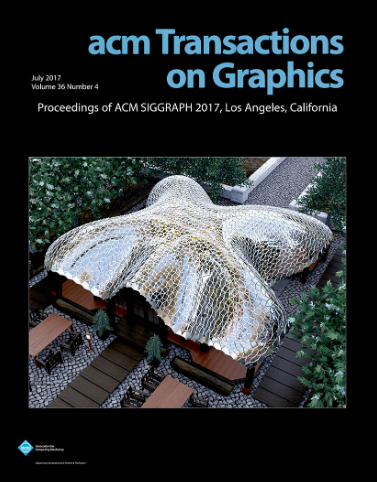光管全息显示:保留带宽的AR眼镜万花筒导向
IF 9.5
1区 计算机科学
Q1 COMPUTER SCIENCE, SOFTWARE ENGINEERING
引用次数: 0
摘要
本文提出了一种用于增强现实的光管全息显示器,以及一种基于带宽保持万花筒导向的全息绘制方法。传统的增强现实显示器通常共享光引擎和图像合并器相邻的光学架构。最小化这两个组件的尺寸是非常具有挑战性的,而且大多数商业和研究中的增强现实显示器原型都体积庞大,前部沉重,并且阻碍了视线。在这里,我们建议使用光管将光引擎与图像合并器解耦并在空间上重新定位,从而实现实用的眼镜式设计。光管通过全内反射,无论其长度如何,都具有引导全角带宽的优势。通过模拟光管内部波前的这种万花筒式引导,并将其应用于全息图像生成,我们成功地将光引擎与图像合并器分离,使器件前端清晰轻便。我们通过实验验证了所提出的光管系统提供具有高质量和3D深度线索的虚拟图像。我们进一步提出了一种模拟和补偿光管偏差的方法,提高了系统的鲁棒性和实用性。本文章由计算机程序翻译,如有差异,请以英文原文为准。
Light Pipe Holographic Display: Bandwidth-preserved Kaleidoscopic Guiding for AR Glasses
In this paper, we present a holographic display using a light pipe for augmented reality, and the hologram rendering method via bandwidth-preserved kaleidoscopic guiding method. Conventional augmented reality displays typically share optical architectures where the light engine and image combiner are adjacent. Minimizing the size of both components is highly challenging, and most commercial and research prototypes of augmented reality displays are bulky, front-heavy and sight-obstructing. Here, we propose the use of light pipe to decouple and spatially reposition the light engine from the image combiner, enabling a pragmatic glasses-type design. Through total internal reflection, light pipes have an advantage in guiding the full angular bandwidth regardless of its length. By modeling such kaleidoscopic guiding of the wavefront inside the light pipe and applying it to holographic image generation, we successfully separate the light engine from the image combiner, making the front of the device clear and lightweight. We experimentally validate that the proposed light pipe system delivers virtual images with high-quality and 3D depth cues. We further present a method to simulate and compensate for light pipe misalignment, enhancing the robustness and practicality of the proposed system.
求助全文
通过发布文献求助,成功后即可免费获取论文全文。
去求助
来源期刊

ACM Transactions on Graphics
工程技术-计算机:软件工程
CiteScore
14.30
自引率
25.80%
发文量
193
审稿时长
12 months
期刊介绍:
ACM Transactions on Graphics (TOG) is a peer-reviewed scientific journal that aims to disseminate the latest findings of note in the field of computer graphics. It has been published since 1982 by the Association for Computing Machinery. Starting in 2003, all papers accepted for presentation at the annual SIGGRAPH conference are printed in a special summer issue of the journal.
 求助内容:
求助内容: 应助结果提醒方式:
应助结果提醒方式:


